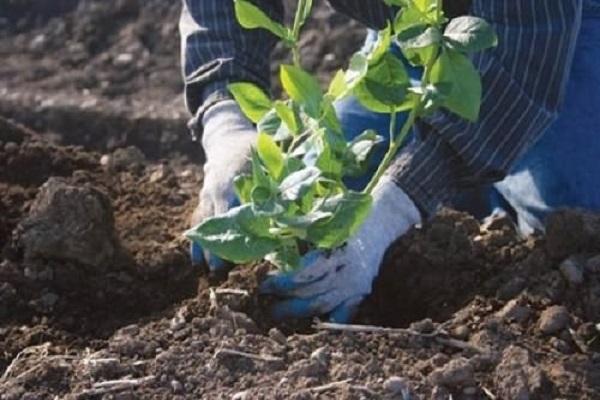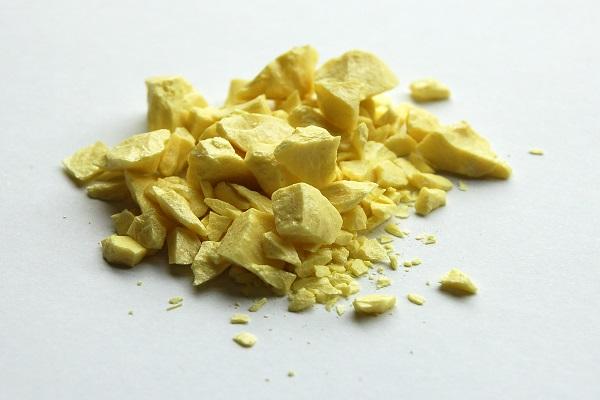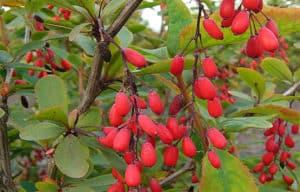What soil composition is needed for garden blueberries and how to make it yourself
New shrubs appear in the collections of amateur gardeners every now and then. And the garden blueberry can become a special exhibit. She will require a special attitude towards herself. To hope for a good harvest, you should choose the right variety and prepare the soil that is most suitable for garden blueberries, or waterhouse, as it is also called.
The main mistakes when growing garden blueberries
It is very important to know exactly how garden blueberries should be planted, and what care they need to provide in order to guarantee an excellent harvest of healthy and tasty berries. Try to avoid mistakes typical of blueberry growing amateurs:
- improper soil preparation;
- the location of the bushes - it is required to be bright and sunny;
- forget about the plant for the whole summer after planting - it is unlikely to survive without watering;
- improper feeding;
- lack of formation of bushes - at least 6-7 strong branches should be on each.
Let's talk about how to avoid mistakes.
Choosing a site for culture
The most successful place for blueberries will be a clean area, where no crops have been cultivated until now. Otherwise, the bush may die. In any case, you will not wait for active development from him.
Do not plant blueberry bushes in low-lying areas. Stagnant water will also negatively affect its root system, and the roots will begin to rot. The same will happen on an area with clay soil.
Understand the main condition - blueberry loves light the most. Choose a sunny area for her. Even in partial shade, you run the risk of “enjoying” the small berries with a sour taste as a result. And the shoots from the lack of light develop more slowly, therefore they do not have time to woody by winter. And this is a direct threat to freeze in cold weather.

Important! If the site is chosen correctly, the harvest is secured.
What soil does garden blueberry like?
It has long been known that the plant is not the most demanding on the composition of the soil. Does not tolerate stagnant water, but planted in sand, on the contrary, will suffer from moisture deficit.
The best blueberry soils are light and acidic. Peat bogs and sandy loam substrates are comfortable for her, and the rotted leaf litter serves to improve the water regime and increase the fertility of the land.
Why do blueberries treat acidic soil this way? Due to the special structure of its root system. You will not find small hairs on blueberry roots. For other plants, they serve as a means of saturation with water and various nutrients. For blueberries, mycorrhiza has become such a conductor.This is the name of micro fungi that can develop exclusively in an acidic environment.

Blueberry high peat becomes a more productive mixture when bark, needles, twigs, cones or sand (10%) are added to it. Low-lying peat is mixed with the rest of the components so that its share is not less than 40%.
How to make acidic soil for blueberries with your own hands?
It is enough to notice in the spring that the leaves turn red to understand that the soil is not acidic enough. Simultaneously with this feature, the entire plant freezes in development. In the fall, reddening leaves shouldn't bother you. The plant is preparing for winter.

If it turns out that the soil is weakly acidic in the allotted area, you can oxidize it yourself, using fairly effective means. These substances are corrosive. So when working with them you will have to wear rubber gloves and more. You will need plastic glasses too, and a mask.
Important! Recommendations on how to increase the acidity of the soil on which blueberries grow (per 1 square meter of land):
- Diluted in 10 liters of water 5 grams of citric acid powder.
- In 10 liters of water, 100 grams of acetic acid is added. But such a solution is used in an exceptional case. They should not be carried away.
- One liter of water with a drop of concentrated sulfuric acid.
- Diluted in 20 liters of water 5 grams of oxalic powder, and the solution is poured into the wells.
- Acidifier from the electrolyte, which is used in car batteries: 30 milliliters per 10 liters of water.
- Powdered sulfur (15 grams) is spread over the soil under the blueberry bush. But first, the ground should be well watered. Then you can plant a shrub.
- Make homemade organic foods. Before planting a bush in a hole, needles, sand, sawdust or peat are laid in it.
It is not difficult to prepare such substrates for the gardener. So with his own hands he will quickly get the necessary soil for the blueberries.

Planting and watering rules for blueberries
Make sure all planting material is healthy and with a closed root system. Young two-year-old seedlings are quite suitable for planting. They can be planted both in autumn and spring.
It is recommended to plant blueberry bushes from north to south, in a row. Each bush should have about 2 square meters. This should be taken into account when calculating the distance between them.

Fertilizers are applied from the season following planting. Sanitary pruning is performed in the third season, removing dry, damaged branches and thinning the crown slightly. Pruning tall branches allows you to give an aesthetic appearance to the shrub.
Treatment with fungicidal agents such as Euparen or Topsin will serve as a preventive measure after pruning.
Little tips will teach you how to water properly:
- Important! The optimal indicator of soil moisture is 60-70%.
- Don't use a hose. Much more benefit from a watering can.
- Watering is required every 3 days, in the mornings and evenings. For an adult bush, you need 5 liters of water.
- Especially abundant watering is required for the bushes in July and August.
- In the heat, you can, in addition to watering, spray with cool water.

Experienced gardeners are well aware of the unpretentiousness of garden blueberries. But you won't be able to close your eyes to her exactingness to the ground. The grower must provide the plant with proper care. And then, in the fall, her rich harvest will become a real source of pride.









